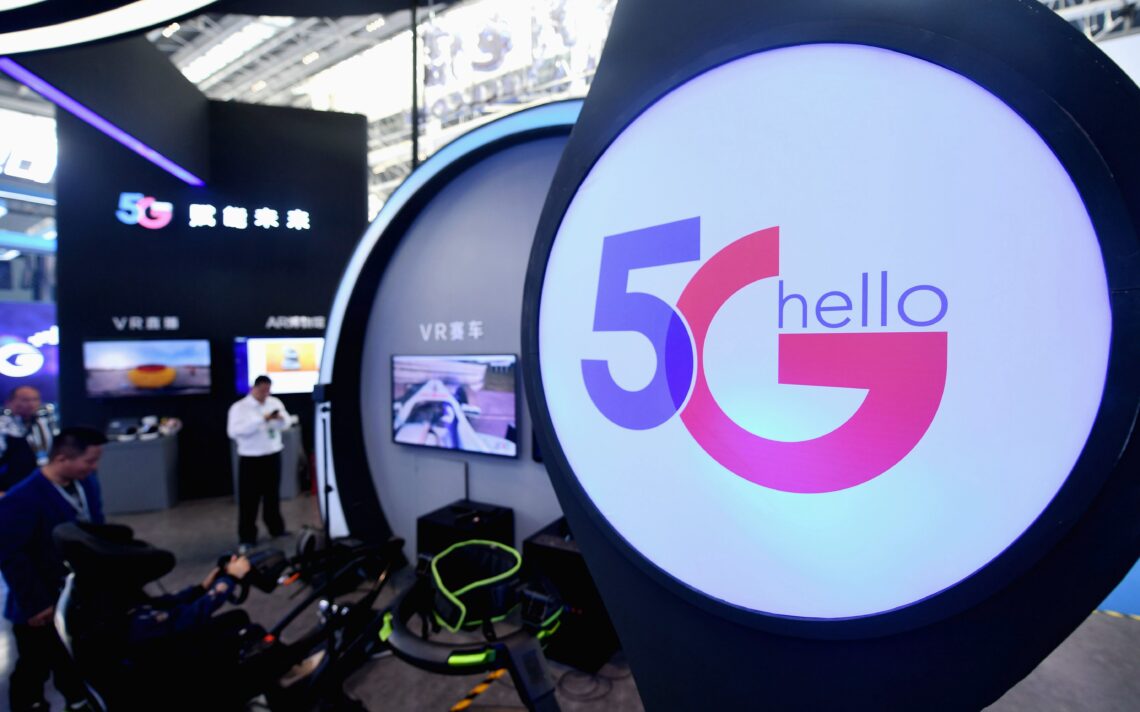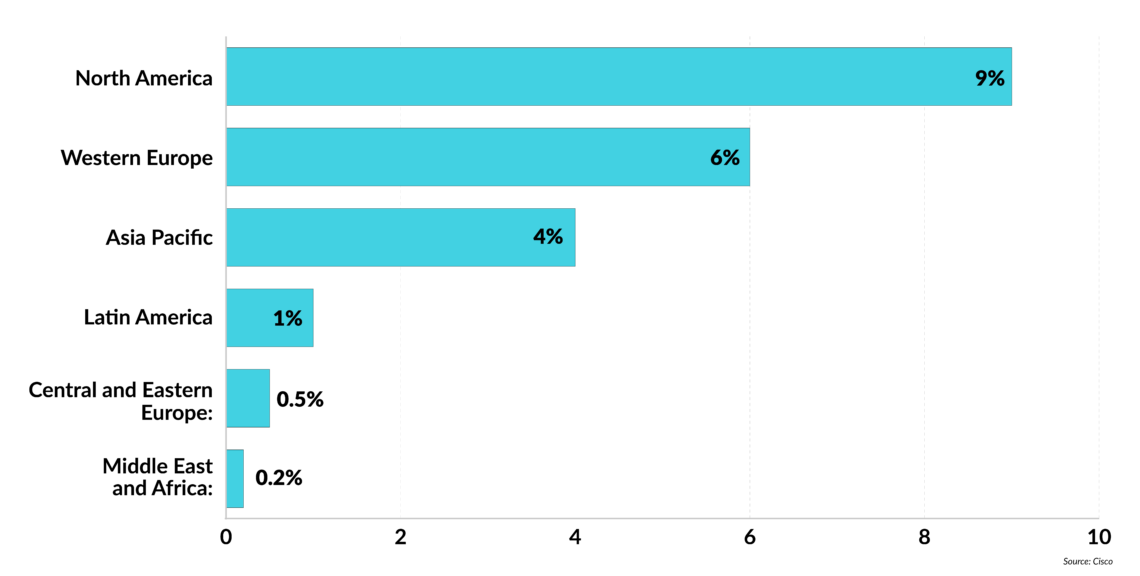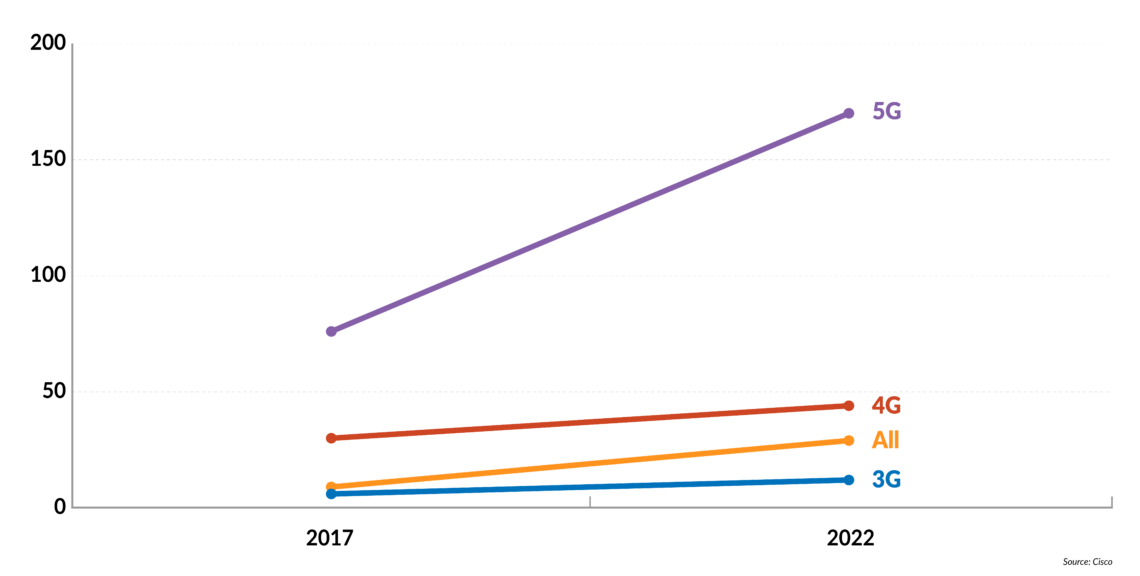The 5G race, status report
The U.S. is further ahead in the 5G development race than many have given it credit for. While China’s centralized, authoritarian government can allocate spectrum and infrastructure sites faster than the U.S., the real benefits from 5G will come from the innovation that it allows – something at which America excels.

In a nutshell
- Europe has fallen behind in implementing 5G
- China has the edge in access to infrastructure and spectrum
- The U.S. leads in the launch of commercial service
- America is positioned to dominate in 5G applications
Deployments of fifth generation (5G) wireless networks are underway in Europe, Asia and North America. Politicians, industry executives and the media characterize the rollout as a “race” for dominance of wireless technology – one in which the United States is supposedly lagging. Those characterizations are erroneous.
The installation of cells, antennas, and optical fiber that will constitute the 5G network is a mammoth task that will take a decade or more in developed countries and trillions of dollars to complete. It is more of a slog than a race.
Once achieved, however, the benefits will be enormous. A study commissioned by Qualcomm Incorporated calculated that full implementation (by 2035) will generate up to $3.5 trillion in revenue globally, and support as many as 22 million jobs.
There are advantages to launching service sooner rather than later, but the essential value of 5G is not the infrastructure per se. The technological leaps will largely spring from the “intelligent” systems and immersive activities that will harness 5G’s blazing download and upload speeds, its unparalleled capacity, and ultra-low latency (the time it takes for a data message to reach its target and initiate a response). Such innovation – in software and other areas – is the U.S.’s strategic advantage.
The U.S. has lagged in the deployment of previous generations of wireless networks, but ultimately excelled in new technologies.
The U.S. has lagged in the deployment of previous generations of wireless networks, but ultimately excelled in applications of new technologies. China, on the other hand, holds advantages in the regulatory realm, including spectrum allocation and infrastructure siting, by virtue of its centralized, authoritarian government. But those advantages also undermine innovation.
As noted by the MIT Technology Review, “How can researchers achieve breakthroughs when there is no free speech, limited freedom of inquiry, not even access to Google Scholar?”
In the months and years to come, various countries will inch ahead of others as 5G deployment advances. The ultimate winners, however, will be nations that unleash innovation and investment from the government’s grip, and that trust free enterprise and individual liberty to create life-enhancing technologies.
5G explained
The term “5G” refers to the fifth generation of cellular wireless technology. It will move data and other content exponentially faster and in greater volume than the previous four generations. It will also dramatically improve latency, reducing transmission bottlenecks.
Perhaps most important, the 5G network promises to greatly increase reliability, which is necessary for launching new wireless capabilities that require continuous transmission, such as autonomous vehicles and machinery, telemedicine, and smart appliances.
Facts & figures
Share (%) of 5G connections by 2022
As a proportion of total connections in each region

Improvements in speed, latency and reliability all require huge network upgrades, including a much denser environment of antennas and base stations, new and upgraded towers, optical fiber rollout and redesigned “core” processing. According to Greensill Capital, the cost of global 5G deployment will total $2.7 trillion by the end of 2020.
Progress in Europe
Europe lags behind both North America and Asia in the deployment of 5G networks, and service is only available in urban centers such as London and Madrid. Industry forecasters estimate that 5G will comprise just 30 percent of Europe’s mobile connections by 2025 compared to 50 percent in the U.S.
The slow rollout is due to several factors, including the unavailability and high cost of spectrum (the government-controlled radio frequencies on which wireless signals travel). To date, only 14 percent of the 5G spectrum has been allocated across the European Union.
Rapidly rising prices in recent auctions have raised concerns that European telecom firms will be left short of the capital needed to install 5G infrastructure, and that the costs of service necessary to cover outlays will prove prohibitive for many consumers, according to a survey by McKinsey & Company. Germany’s recent auction, for example, dragged on for three months, during which time mobile service operators shelled out 6.5 billion euros for 420MHz of 5G spectrum, ZDNet reported.
EU bureaucracy is also an impediment. Network security standards, for example, have yet to be finalized – in contrast to U.S. network operators who designed secure network components. Contributing to the EU’s relative lethargy is indecision about the use of equipment from Chinese manufacturers Huawei and ZTE, which pose a security risk by virtue of their legal obligation to cooperate with Beijing’s intelligence apparatus.
European network operators lack easy access to capital because of a sharp decline in their market valuations.
European network operators also lack easy access to capital because of a sharp decline in their market valuations, which fell collectively from 234 billion euros in 2012 to 133 billion euros in 2018, according to the Financial Times. Moreover, the business case for 5G investment is harder to make in Europe’s small and fragmented markets. Despite these roadblocks, a total of 165 trials were underway in 28 EU countries at the end of September 2019. Limited 5G services are now available in Austria, Estonia, Finland, Germany, Ireland, Italy, Spain and the United Kingdom.
Europe does benefit from being home to Nokia (Finland) and Ericsson (Sweden), the firms that are among the handful of 5G equipment suppliers worldwide. According to Forbes, the two companies recently won multibillion-dollar 5G infrastructure contracts from Verizon and AT&T – the two largest U.S. telecom companies, while third-place T-Mobile has agreed to pay Nokia and Ericsson $3.5 billion each to build components for its 5G networks.
Progress in China
The Chinese government is aggressively pushing the development of 5G technology to “catch up and surpass” the U.S. and other global leaders. Network deployment features prominently in the current five-year economic plan and the Made in China 2025 industrial strategy, Foreign Affairs reported. Although China lagged in the deployment of 3G and 4G networks, Chinese network operators are currently conducting “extensive” 5G trials, according to tracking by the EU.
China’s three dominant telecom operators, China Mobile, China Unicom and China Telecom, are state-owned enterprises subsidized by the government. The government reserved large bands of 5G spectrum and allocated licenses at an accelerated pace compared to Europe and North America. Beijing is also subsidizing Huawei, which supplies 50 percent of China’s wireless network equipment.
Despite the jump start in spectrum licensing, China still faces a number of technical and geopolitical challenges. For example, a complete migration to 5G in that large and populous country will require the installation of tens of millions of small cells (estimated between 66 million and 164 million) amid a shortage of trained workers for the task.
Facts & figures
Mobile speeds by technology
Megabits per second (Mbps)

More problematic, perhaps, is the U.S. prohibition on sales of sensitive technology to Chinese firms, including Huawei, the largest provider of 5G equipment. Heavily dependent on American technology, Huawei could face shortages of essential 5G components for its products. Meanwhile, additional restrictions on the use of Chinese equipment in Europe and North America could further narrow the revenue stream needed for 5G innovation.
Elsewhere in Asia, 5G deployment is occurring rapidly, particularly in Japan and South Korea. Both countries have an advantage in their relatively small size, of course, but also their stable of homegrown suppliers, technically sophisticated populations (with cash to spare), and dense population centers that generate the highest returns on new service. South Korea will have an estimated 41 million 5G connections – or 66 percent of all connections – by 2025, and Japan is expected to complete 98 million connections (or 49 percent of total connections) in the same period.
Progress in the U.S.
The United States currently leads the world in the launch of 5G commercial service, though it is limited. According to the Cellular Telecommunications and Internet Association, “America leads the world with the most commercial 5G deployments of any nation.” A variety of late-stage trials are also underway.
The most vexing barriers to 5G deployment in the U.S. happen to be China’s advantages – the availability and cost of spectrum, and access to public infrastructure for siting equipment. The administration of President Donald Trump has directed federal agencies to cooperate with the Federal Communications Commission (FCC) to free spectrum for 5G use, but not all departments are eager to relinquish their radio-frequency real estate. There have even been public run-ins between the FCC and the Departments of Defense and Commerce.
Indeed, FCC Chairman Ajit Pai, during a Senate Commerce Committee hearing, expressed his frustration. “The Department of Commerce has been blocking our efforts at every single turn,” he complained.
More than any other nation, the U.S. has been focused on utilizing high-band spectrum for 5G transmissions.
More than any other nation, the U.S. has been focused on utilizing high-band spectrum for 5G transmissions. These “millimeter wave” (mmWave) bands – above 24 GHz – have limited capacity for distance, making deployment of a much greater number of cells more time consuming and costly. However, the mmWave spectrum provides much greater capacity, which equates to ultrafast speeds.
The U.S. government is attempting to clear additional low- and mid-band spectrum for 5G transmissions, and coverage is expected to reach 50 percent of mobile connections in 2025 (covering 80 percent of the U.S. population), according to GSMA Intelligence, a mobile telecommunications industry data and analysis firm.
The FCC is also trying to rein in municipalities that are squeezing telecom companies for cash and other perks in exchange for permits and siting access to public infrastructure. In a declaratory ruling last year, the commission detailed the circumstances in which the federal government would preempt state and local governments on 5G policy and set time limits for permit applications.
According to technology conglomerate Cisco, North America will have the world’s largest share of 5G connections by 2022.
Scenarios
By the end of 2019, at least 18 major countries are expected to have partial 5G service. Analysts predict that the majority of deployments will occur after 2020. Service take-up is expected to reach 1.4 billion connections (18 percent of the total) by 2025, largely driven by the U.S., China, Korea and Japan. Europe will likely ramp up after 2021, according to GSMA forecasts, with the technology taking hold in Latin America and Africa after 2023.
The 5G service market will undergo dramatic changes as mobile operators partner with the commercial and industrial sectors to expand the “Internet of Things” (the growing data network between everyday objects). Today’s reigning platforms are likely to face increasing competition from an entirely new generation of applications.
In decades past, the U.S. played catch-up in space exploration and innovations in telephony. While some observers now claim the country is also behind in 5G deployment, America is positioned to dominate the world in 5G applications. The U.S. utilization of high-frequency spectrum will accommodate data-rich machine learning tools and security innovations. Most important, America’s entrepreneurial spirit – despite the administrative state’s expanding reach – will drive the creativity and ambition that are key to technological advancement.







